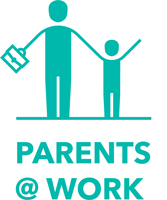Disconnect
Today, modern technologies make it more and more possible to be reachable at all times. This is simplifying the introduction of measures such as working from home or decentralised work.
At the same time, it increases the risk of blurring the line between work and private life and, consequently, disrupting the balance between the two.
A few tips in support of a good work-life balance regarding connectivity are listed below.
As with other measures, it is important to take account of the wishes of ALL employees when making agreements or introducing codes of conduct around (dis)connection. There are often great differences in preferences (one person might prefer a long lunch break and will still check a few e-mails in the evening, while another will prefer to concentrate on work throughout the day and switch off when they go home). This means a good policy will give some freedom to the employees themselves, but will also stipulate what is and is not expected. As always, clear expectations, open communication and timely evaluation of the measures are important.
Make expectations around disconnection and the use of digital communication tools clear.
Since 9 April 2018, it has been a legal obligation (Kris Peeters Legislation) to regularly consult on disconnection and the use of digital communication tools within the Committee for Prevention and Protection at Work (or with the trade union, or directly with your employees if the other options are not available).
This allows proposals for expectations to be formulated. Here are a few examples of expectations that you could use:
- You will not be expected to read or answer e-mails sent after 5pm the same day.
- You will be expected to send a suitable reply to e-mails received within 3 working days.
- You will not be expected to participate in WhatsApp groups with colleagues.
- You will not be expected to be contactable by telephone between noon and 1pm when working from home.
- You will be expected to be contactable by telephone between 10am and noon and between 1pm and 3pm when working from home.
You can set out these expectations in a code of conduct, for example. Doing things this way makes it clear for your employees how they might or might not be evaluated and they retain the freedom to arrange their working day in line with a working pattern that suits them best.
Make agreements about communication during your employee's (thematic) leave.
The checklists describe all the different kinds of leave available to your employees, depending on their role as a parent or carer.
During these periods of leave, which may at times run for a long time, it can be handy to get in touch with your employee every so often. This could be about the exact date of return or administrative matters, as well as the fun events such as the first photos of the child and birthday wishes. This will show your employee that she/he has not been forgotten and is still an essential part of the company.
But limit this contact too. The leave has been taken to spend time with the family and stay away from work on these days. You should therefore avoid substantive questions as much as possible.
Discuss with your employee in advance what expectations and wishes you both have for communication during this period.

